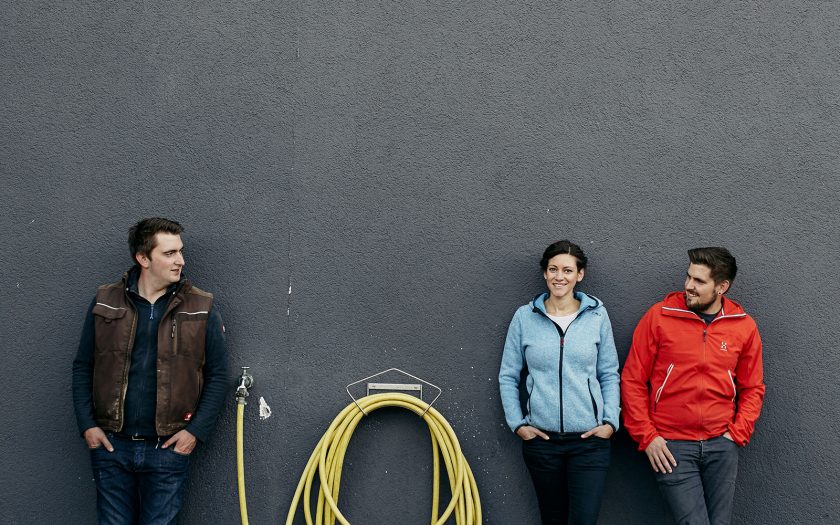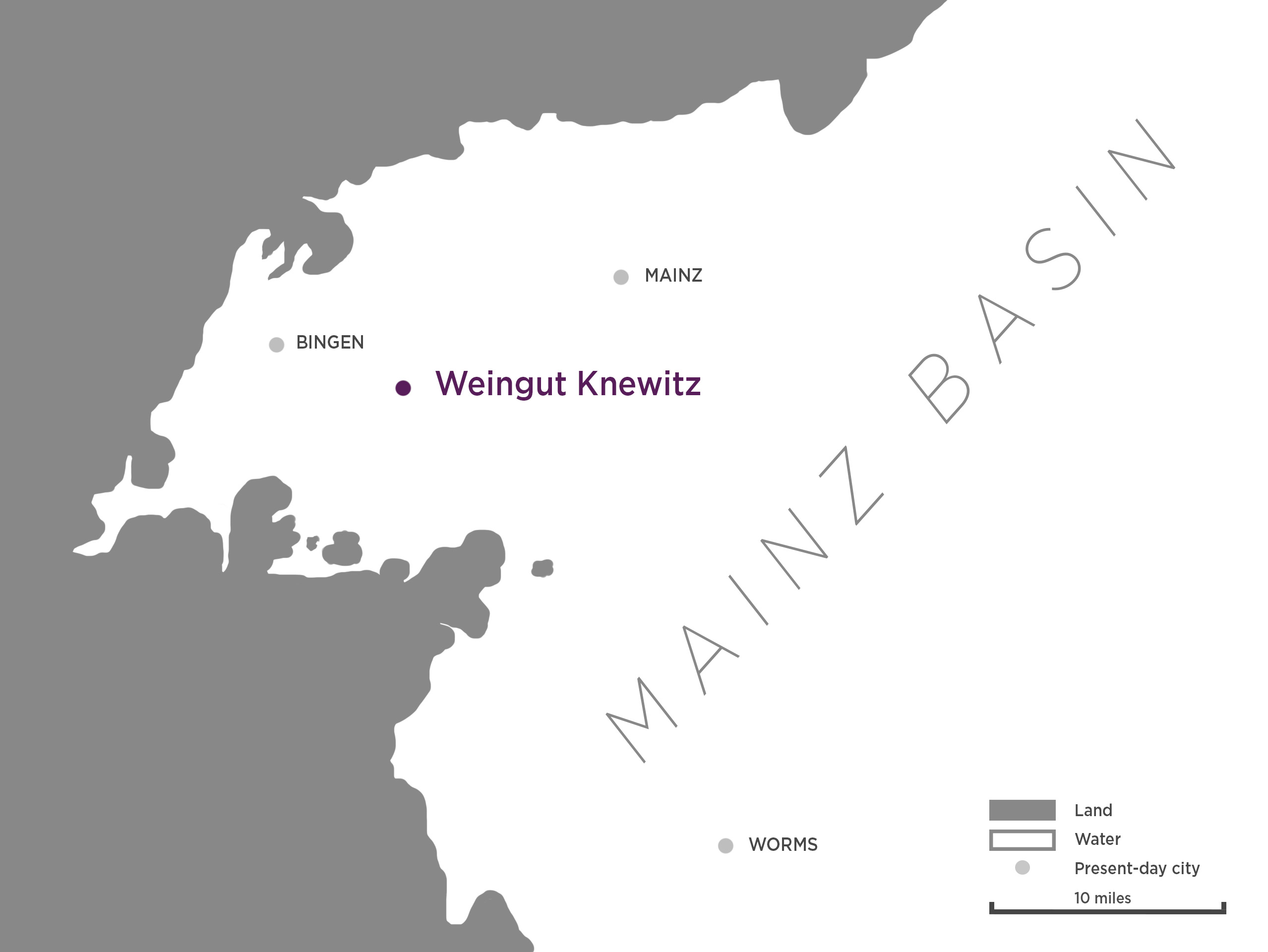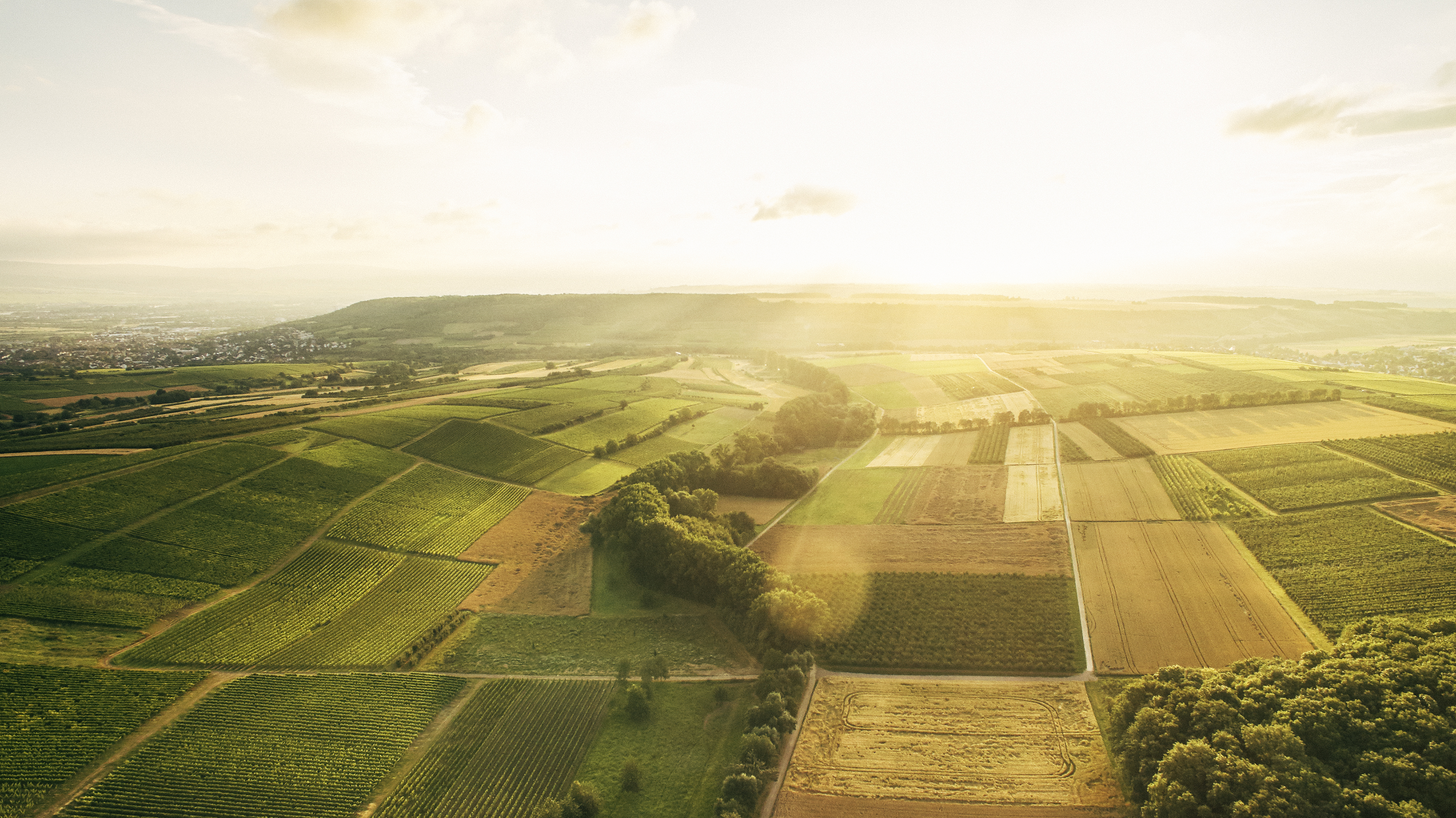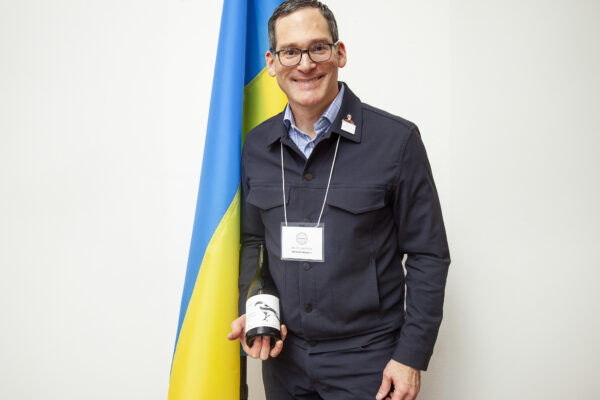In the Rheinhessen, a family estate is reaping the benefits of well over 100 years of family history and 40 million years of geological evolution with showstopping cool climate wines.
The Rheinhessen is the largest winemaking region in Germany and a region that most would call “landlocked.” But Knewitz insists they are “an estate by the sea,” and they’re not wrong—they’re just a few years late.
200 miles from the nearest beach, the earth tells a story from a time when it sustained life underwater. A flourishing coral reef once populated a massive sea over Central Germany, and with it, prehistoric fish, reptiles, and sea mammals enjoyed a tropical existence.
In their place today is “the land of a thousand hills,” where the soil boasts a high limestone content, and evidence of the ancient reef and its inhabitants are left immortalized as fossils.
This is the story the Knewitz brothers want you to know, so they’re letting the earth speak for itself. They work like dutiful prophets, merely transcribing what the soil has to say through a different, universally understood language.
Only wine allows people to truly understand the taste of the earth. – Collette
“The grape is the crucial mediator,” Bjorn Knewitz says. “We make honest, artisanal wines that are characterized by the interaction of the soil, the climate, and the handwriting of the winemaker,” his brother Tobias adds.
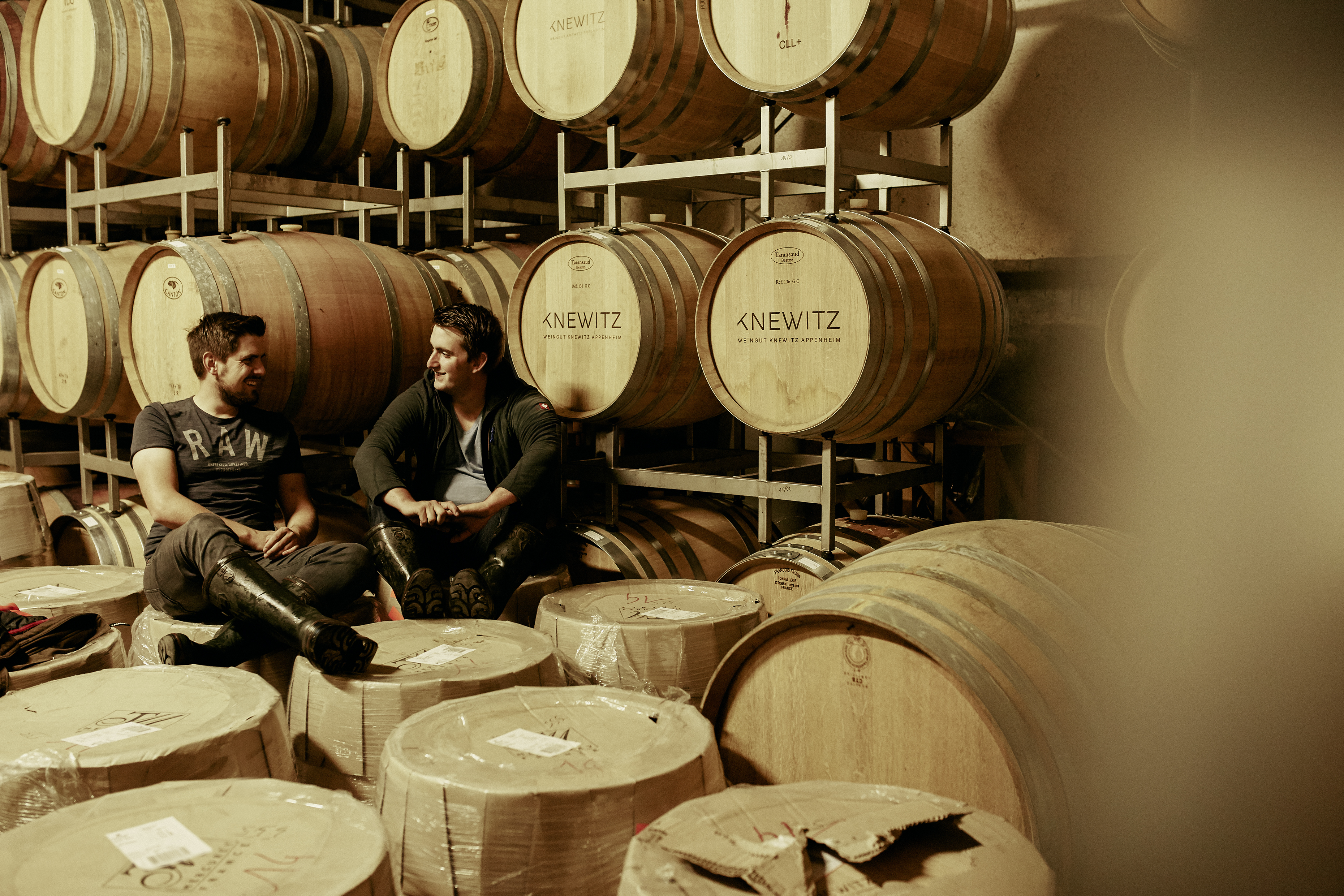
It’s a clever metaphor to compare the Knewitz approach to winemaking with handwriting; they’re not changing the earth’s original story, but the style they imprint on it communicates a subtle personality. And Knewitz’s penmanship continues to be refined after centuries of practice.
Their ancestors began making wine in their village of Appenheim in the late 1800s, and Tobias and Bjorn’s grandmother laid the cornerstone for their current winery with their father in the 1970s. Today, the brothers share the reins with Tobias’s life partner, Corina.
Now they farm 6 unique vineyards spread over 25 hectares across three main villages: Appenheim, Gau-Algesheim, and Nider-Hilbersheim. Their crown jewel, the Hundertgulden vineyard, is a historical treasure with records dating back to 1148 when it was gifted to the Disibodenberg Monastery. It also has the distinction of being the most limestone-rich vineyard in all of Germany.
Each vineyard produces distinctly different expressions of the same grape. Riesling dominates the landscape here, with some Pinot varieties and Chardonnay found in smaller blocks.
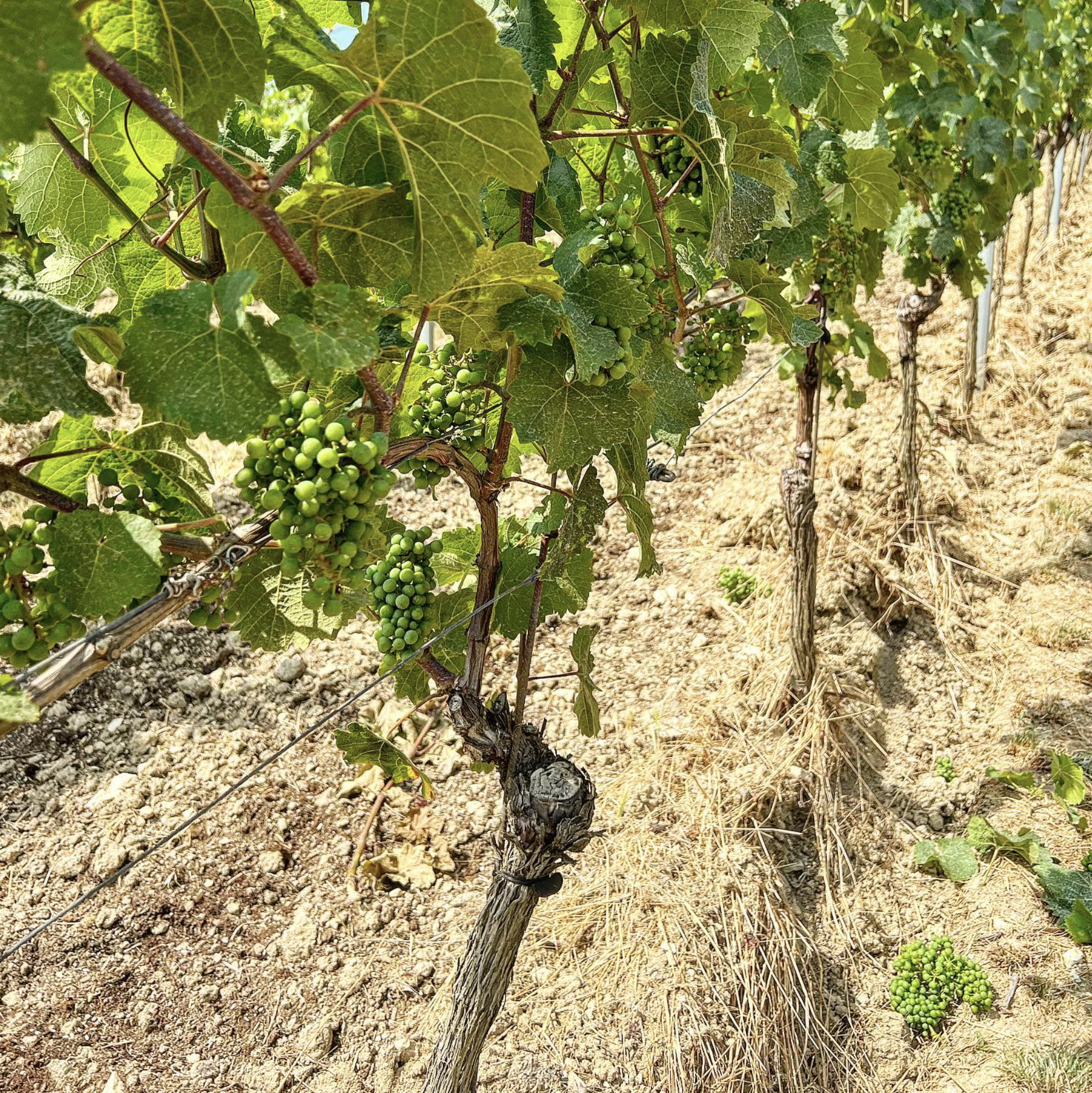
Riesling is the preferred medium for telling the earth’s story, according to Knewitz. “Is there any other grape that so precisely and clearly depicts the soil, the climate, the orientation and inclination of the vineyards, the weather pattern and the vintage as Riesling is able to do?” posits Tobias. “Our idea of Riesling is timeless. It is created in the vineyard, and we guide it through the cellar.”
“The wines are an authentic reflection of their origin,” says Bjorn. “The more thoughtful and considerate one works with nature, the more honest will be the wines that emerge.”
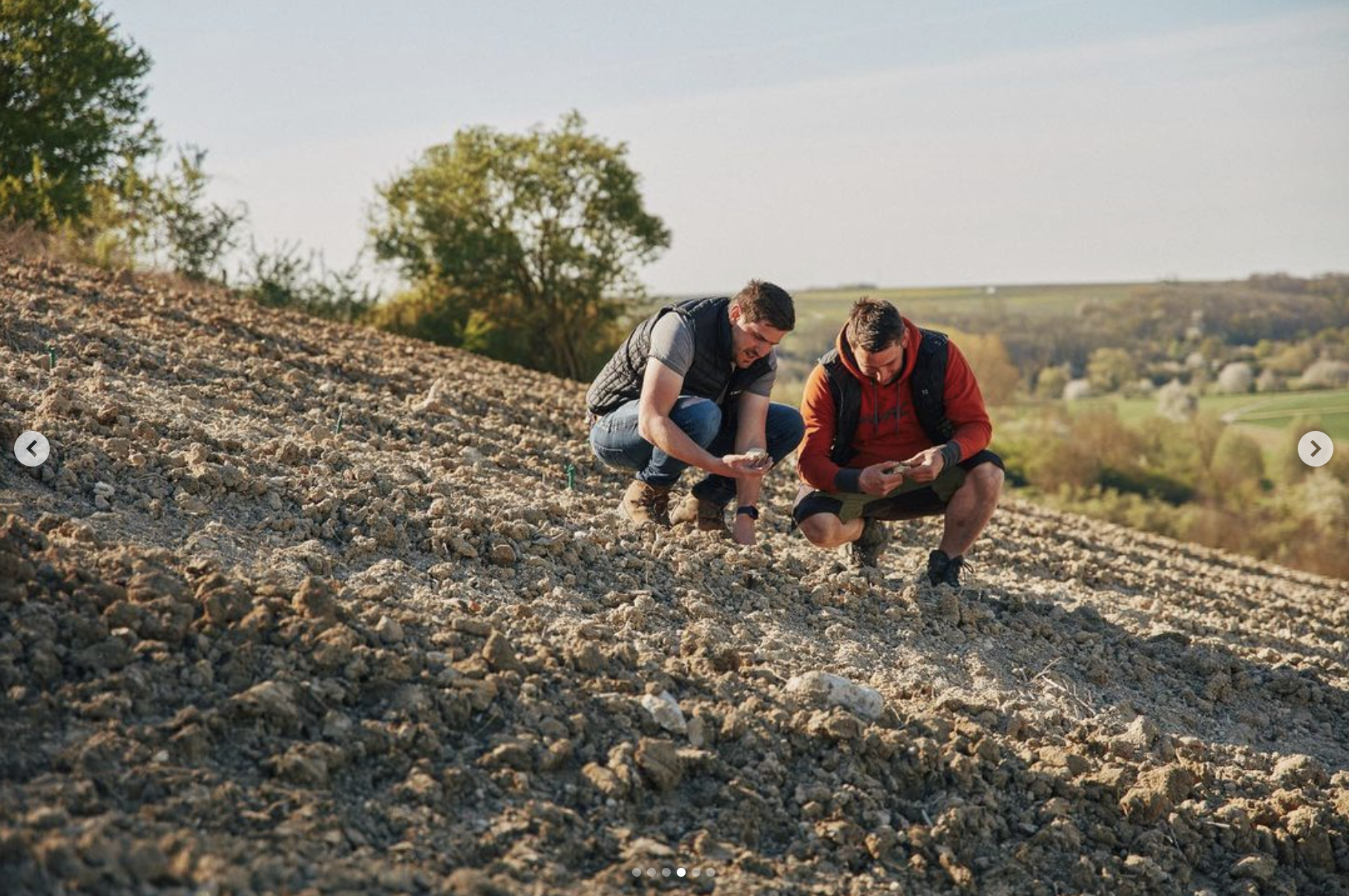
The Knewitz philosophy has paid off. In 2021, they were invited to join the VDP putting them among a prestigious group of German wineries.
Skurnik is proud to welcome Knewitz to the portfolio! Be sure to taste their stunning lineup at the Germany/Austria Tour this month. Contact your rep for more info. Prost!
Learn more about Weingut Knewitz here.




